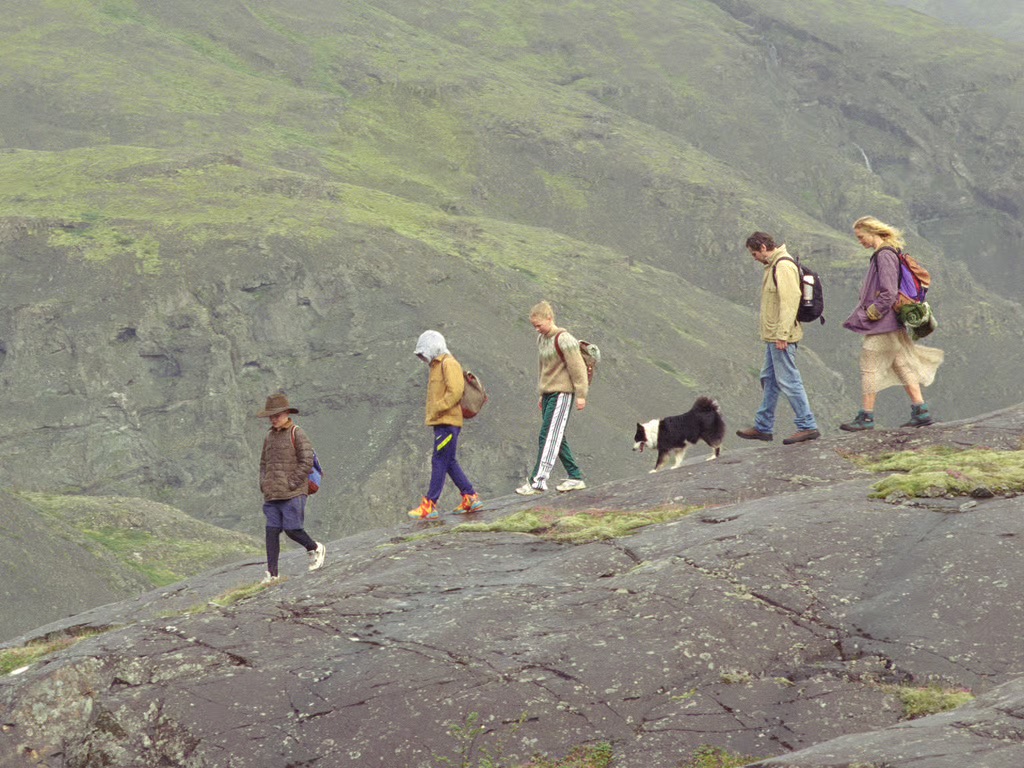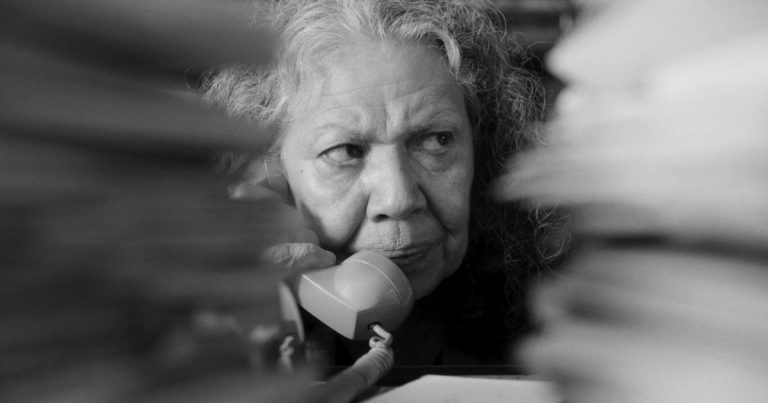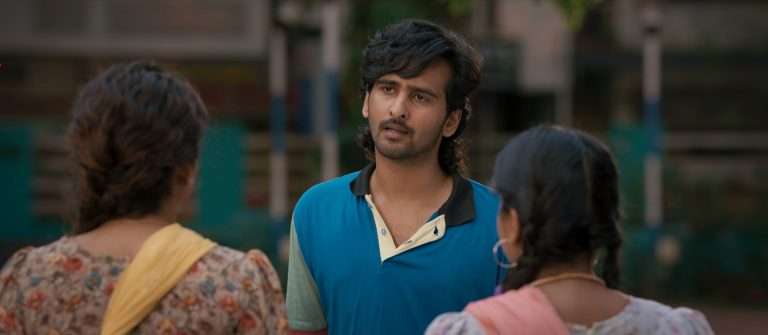Divorce is a topic that is often brought up in films, but generally as an ultimatum, and not a reality. While it may be dramatically straightforward to depict divorce as a nasty, whirlwind process that brings both parties to their emotional limits, separation is simply a fact of life for a significant percentage of global couples. A separation does not indicate that all previous feelings are expunged, nor does it create an entirely new dynamic that begins instantaneously. In what is probably his best film to date, writer/director Hlynur Pálmason crafted an honest, yet mischievous look at the life of a separated family over the course of a single year.
“The Love That Remains” (Original title: Ástin sem eftir er, 2025) doesn’t need to provide any specific details about what incited the breakup between Anna (Saga Garðarsdóttir) and her husband Maggi (Sverrir Guðnason) beyond the fact that they were once married, and now live separately whilst trying to raise their three children, who are curiously played by Pálmason’s real children Ída Mekkin Hlyndsdóttir, þorgils Hlynsson, and Grímur Hlynsson.
Anna and Maggi seem to have no animosity towards one another, and even briefly consider rekindling the physical component of their relationship after a brief moment of familial gathering. Ironically, they’re kept apart not out of post-marital tension, but by the nature of their respective professions. Both Anna and Maggi have chosen difficult fields, which makes it even more challenging to raise three children who have grown increasingly interested in getting into trouble.
Anna has taken after her father, an artist, and has tried to get her own galleries maintained as the tough winter approaches; there are more than a few playful jabs at high-minded art pundits, including a particularly amusing meeting with a client that gives Garðarsdóttir some terrific punchlines to deliver. Maggi is part of a herring trawler crew that has ventured into the sea, and often spends bitter, freezing days isolated from the rest of the world.
Although “The Love That Remains” doesn’t suggest that they are entirely miserable, it does acknowledge the realities of their lives. Anna’s passion for artwork is only occasionally witnessed amidst her professional inquiries, and Maggi’s companionship with his fellow sailors is the only uplifting aspect of a difficult job.
Perhaps the archetypes of a “long-suffering artist” and a “lonesome sailor” could have become cliched had Pálmason keyed in on their emotional burdens, but appropriately, “The Love That Remains” finds its serenity in the moments of familial activity. Both Maggi and Anna are appropriately snarky characters who have used their professional skills to aid the household.
Maggi is capable of handling the various labor and construction projects needed on the family farm and home, and Maggi has conceived of various arts-and-crafts schemes to entertain their children. It’s perhaps seeing each other as co-workers that Maggi and Anna are able to form a deeper connection, even if the brief instances of intimacy suggest to them that they could blow up at one another at any moment.

Also Read: 75 Best Movies of The 2010s Decade
“The Love That Remains” is a beautiful-looking film, as Pálmason finds painterly images in the gorgeous Icelandic nature, which are even more engaging because they’re simply an aspect of these characters’ reality. While they can expect to see the waves hugging the shore and the sun setting over the glistening snow on a regular basis, they also must deal with cumbersome animals, untenable fields, and a significant distance from other locations.
It’s because of this peculiar isolation that the children have formed a rather tight bond with each other, as even their most playful ribbing is done with affection. However, there are few better ways to get children to get along with one another than to get them misbehaving, as the headaches they cause for their parents become increasingly hilarious as the season drags on.
It’s perhaps due to the impressionistic approach that Pálmason has taken that “The Love That Remains” never seems to judge its characters or make any assumptions about what effects their marital fissure had. Are the children misbehaving because their parents are too busy to watch over them, or have they developed creative and analytical skills as a result of their upbringing? Was it Maggi’s straightforward, unsentimental attitude that gave them such reckless tendencies, or was Anna’s easy-going sense of humor and independence responsible for their growing irreverence?
As with any great film about parenting, “The Love That Remains” shows that reflecting upon past mistakes is often pointless. Since the film spans a year’s time, moments that seemed unforgettable or life-altering at the time will slowly fade away, while seemingly inconsequential instances of companionship and love will remain etched in their hearts.
“The Love That Remains” may baffle some audiences with instances of avant-garde humor that grow more frequent in its final third. As admirable as it was for Pálmason to take this risk, none of the gags are so indispensable that they stand out amidst the film’s other jokes. However, it’s impressive that a film so confident in its authenticity never feels the need to step into melodrama or insert conflicts that would result in an emotional climax.
The most anticipated, strenuous moment is in regards to where Maggi will spend his holidays, as it’s unclear whether it would be appropriate for him to stay with his ex-wife. However, the actual climax of the story is the result of a genuinely shocking moment involving the children that solidifies the film’s slightly edgy sense of humor.
“The Love That Remains” is surprisingly offbeat, despite its familiar premise, and offers a realistic portrayal of familial evolution whilst still reaching poetic, thematically rich moments. It’s a major breakthrough for Guðnason, who had previously proven himself in the underrated sports biopic “Borg vs. McEnroe.” For Garðarsdóttir, it’s a performance of grace, warmth, and depth that should merit serious consideration for award recognition.
To be both a fairy tale of sorts at a picturesque catalog of what the year in the life of an average family looks like is an unusual blend, but “The Love That Remains” is refreshingly idiosyncratic and certainly ranks among the year’s most welcome surprises.









